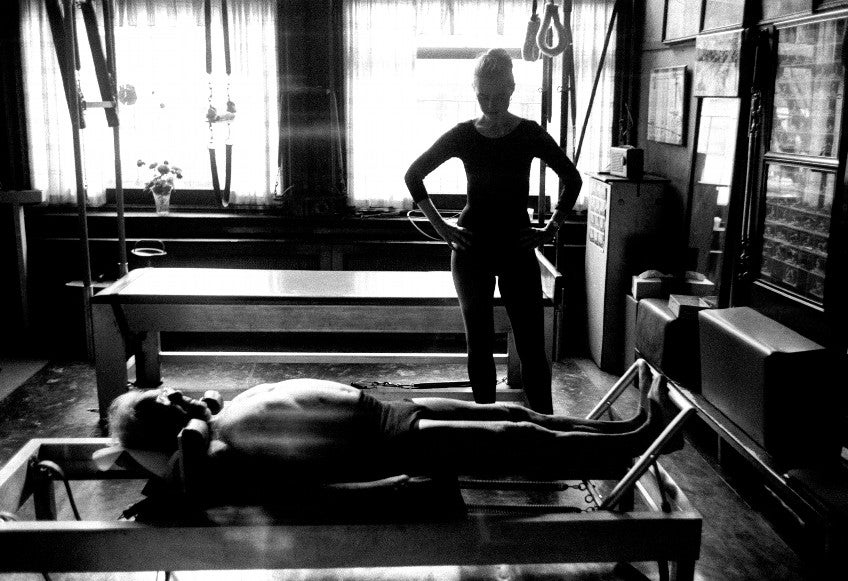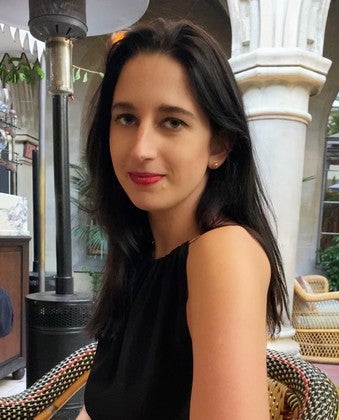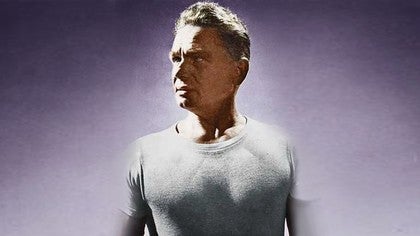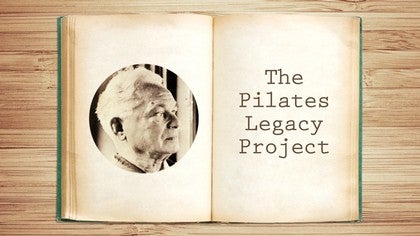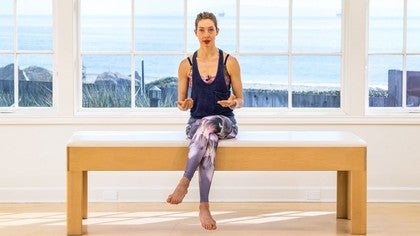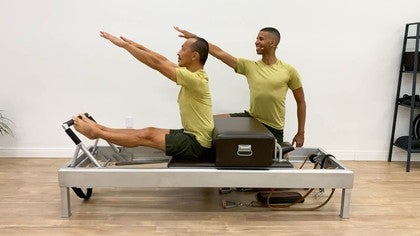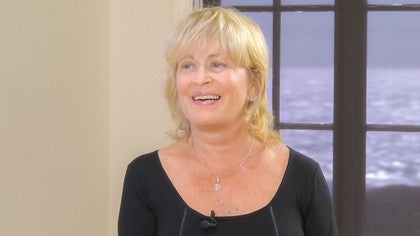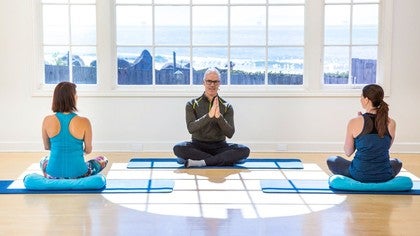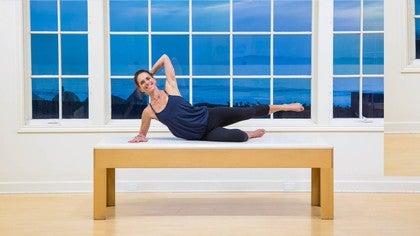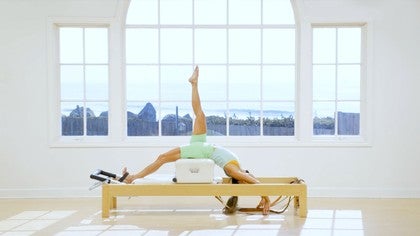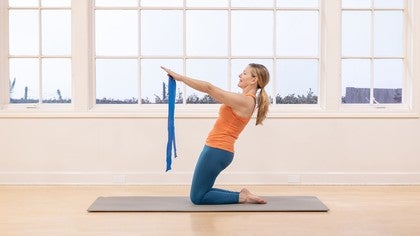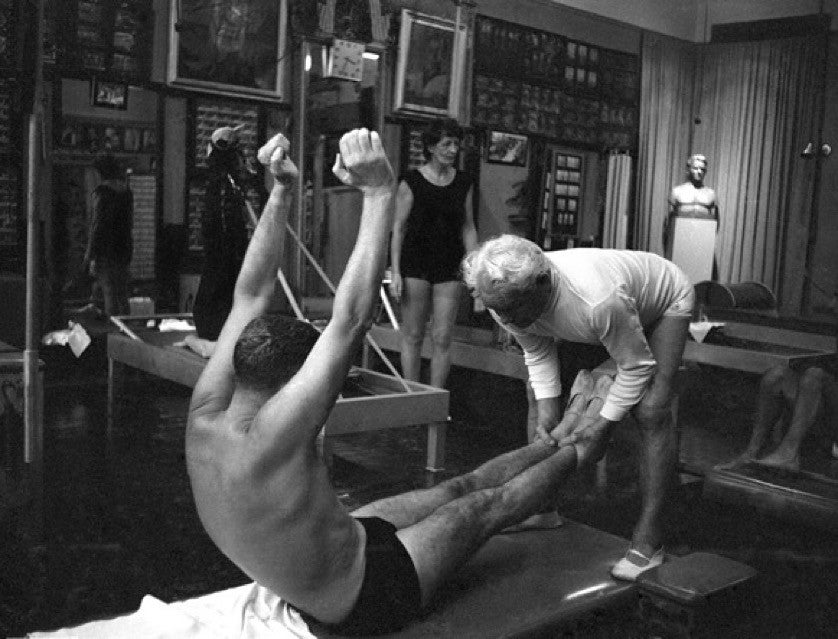
Pilates for Anyone, Anywhere
Last October, The New York Times published an article entitled, The Fight for the Soul of Pilates*. Placed conspicuously on the cover of The Times’ Sunday Styles section, this article features a large photograph of Joseph Pilates, Founder of the Pilates Method, assisting one of his students.
What’s remarkable about this image is that Pilates teachers and enthusiasts alike would know exactly who this man is without reading the article. In 1961, I.C. Rapoport** photographed Mr. Pilates working with clients at his Eighth Avenue studio in the heart of Manhattan. At the time, Mr. Pilates was nearly eighty years old, active as ever, and proud of his shape.
Along the walls of Mr. Pilates’ studio are photographs and posters showing how to do an exercise, and more importantly, how to move your body through each exercise. Before video content became as widely accessible as it is today, both Pilates teachers and students have used visual aids like photographs and drawings to assist in teaching correct form and movement.
Pilates and The New York Times
The crux of The Times’ article chronicles the ongoing debate on whether “Pilates” is a copyrighted trademark or free for the public to access and share.
Legal battles are not new to the Pilates community. In 1996, Sean Gallagher sued Balanced Body™ for copyright infringement in using the word “Pilates”, a trademark he claimed to own. After four years of litigation, the courts ruled in favor of Balanced Body™ because they determined that “Pilates” is a general exercise term, such as “yoga” or “karate”. In essence, Mr. Gallagher’s trademark was invalid.
However, a new legal battle is emerging between Mr. Gallagher and Mary Sullivan Kelly, Owner and Instructor at True Pilates Boston, for using his trademarked images to market her business without his permission. She subsequently filed a countersuit, citing she did have the right to post those images on her Instagram page.
Although many of the images Mr. Gallagher claims to own can easily be found online, such as those from the New York Public Library, he has sparked a divide within the Pilates community. While Mr. Gallagher and his supporters believe he is preserving the sanctity of the true Pilates Method, many others feel differently.
The Times spoke with several Pilates teachers from across the United States, who believe Mr. Gallagher targets them on social media. Their stories follow a similar cadence: Mr. Gallagher reported an Instagram post or account to Meta, Instagram’s parent company, for copyright violations and Meta subsequently removed the teachers’ infringing posts. For example, a teacher posts a popular photo of Mr. Pilates on her Instagram account. Even if it is for educational purposes, anyone can report the post to Meta. It remains unclear how far Meta researches these claims and reports, but these decisions are often beyond the user’s control.
Impact on Pilates Teachers and Businesses
While a teacher can bounce back from a deleted post, once Meta deletes an account, it is gone forever. Some teachers report permanently losing their Instagram accounts due to Mr. Gallagher’s copyright claims, including Ms. Kelly, who lost two accounts.
Pilates teachers, studios, and companies alike depend on social media for marketing their businesses. These copyright claims disrupt livelihoods, as social media is one of the main ways both companies and individuals promote their services and connect with clients. Furthermore, amidst the coronavirus pandemic, Pilates teachers relied heavily on social media to keep their businesses alive, such as by promoting a livestreamed class on Zoom, YouTube, Facebook, or Instagram.
Why You Should Care
“What’s interesting about this article is that both sides are not only talking about it, but they are also sharing the article and encouraging others to read it,” remarks Kristi Cooper, Co-Founder of Pilates Anytime. “It’s an ironic twist on a very divisive issue.”
Since its founding in 2010, Pilates Anytime has dedicated itself to making online Pilates classes accessible to anyone, anywhere. In addition to classes, Ms. Cooper is passionate about preserving and sharing Mr. Pilates’ legacy through a series of documentaries entitled The Pilates Legacy Project. These documentaries feature a variety of perspectives from Pilates Elders (those who studied with Mr. Pilates) and those who knew them, as well as other important figures in Pilates history.
“Pilates is good for everyone. Anyone can do Pilates if they have access to it,” Ms. Cooper relates. “Pilates Anytime exists so that everyone has access to high-quality Pilates classes with some of the best teachers in the world - regardless of location or income.”
Even Mr. Pilates took photographs and videos of himself, not only performing his original Mat exercises, but also demonstrating how to use his pieces of equipment, such as the Reformer and the Wunda Chair. Ms. Cooper notes, “To win over the medical community, Mr. Pilates used a video of him teaching Eve Gentry after her mastectomy. When doctors did not believe it was possible to gain full range of motion of her arm without a pec, Mr. Pilates re-recorded Eve doing the work without a shirt on.”
Pilates Anytime aligns with this excerpt from Mr. Pilates’ book Return to Life, “The whole country, the whole world, should be doing my exercises.”
Ms. Cooper wants you to remember, “Learn, then teach. Always share.”
*The New York Times article requires a subscription. Whether you are a Pilates teacher, studio owner, or student, we encourage you to read this article.
**Special thanks to Mr. Rapoport, who has kindly given Pilates Anytime permission to post his photographs as part of this article.
Comments

You need to be a subscriber to post a comment.
Please Log In or Create an Account to start your free trial.

